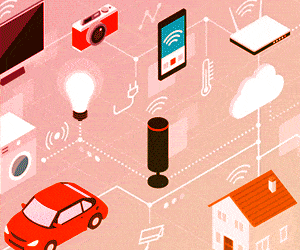Intel Galileo is a part of Arduino family and is as simple to program even for non-programmers. Arduino philosophy is consistent in Intel Galileo as well. In this article, we shall start with Intel Galileo and then will be able to run our first program. Some more examples like glowing a single LED, multiple LEDs, RGB LED and reading a potentiometer are also presented at the end to help you get hands-on with Galileo board. Intel Galileo board used in this article is shown in Fig. 1 and top view of the board is shown in Fig. 2.
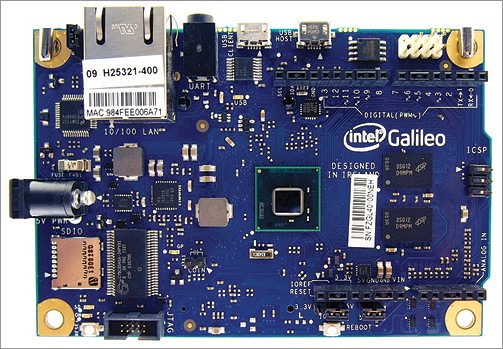
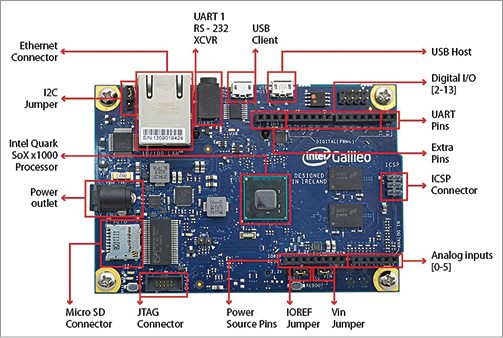
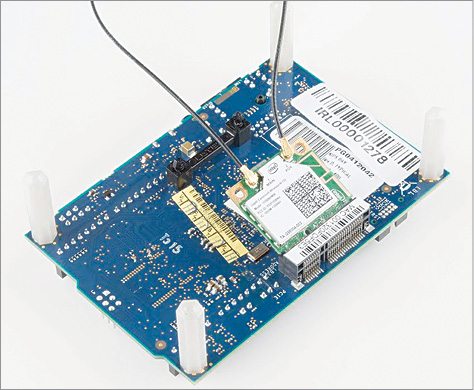
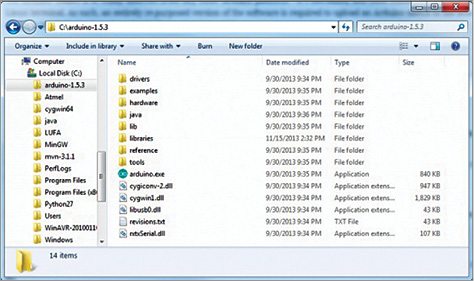
Board interface

Following is the brief description of the components and interfaces of Galileo board:
5V power supply. A 2.1mm centre-positive jack for 5V regulated DC supply is used. Galileo board comes with AC-to-DC power adaptor having an output of 5V, 3A. Voltage input to Galileo board must not be more than 5V.
Ethernet interface. There is one 10Mbps/100Mbps Ethernet interface on board. Ethernet control has a dedicated PHY.
RS232 interface. A 3-pin, 3.5mm jack (audio type) forms the RS232 interface. Ring of the jack is transmitter (TX), tip is receiver (RX) and the sleeve is ground.
USB 2.0 client. To program Galileo board, this port is connected to the computer.
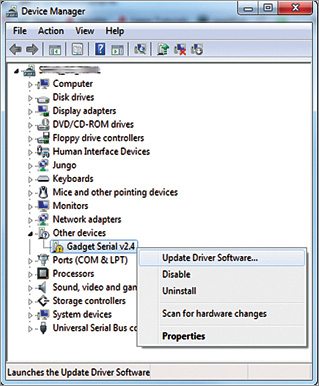
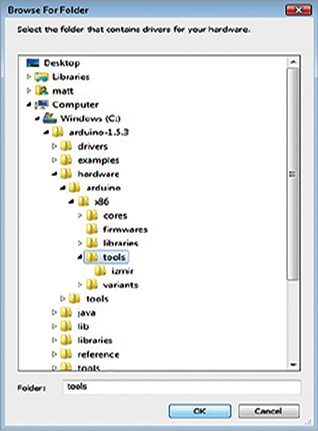
USB 2.0 host. USB2.0 full host supports USB device interface. Up to 128 devices can be connected to this port with the help of a USB device hub.
Arduino interface. There are two interfaces, namely, digital and analogue.
Digital interface. Galileo has 14 digital input/output pins. This includes UART on pins 0 and 1, I2C pins and SPI pins. Six digital inputs/outputs can be configured as PWM (pins 3, 5, 6 and 9-11).
Analogue interface. It has six analogue inputs (A0-A5). It also has an 8-pin power header that includes 3.3V, 5V, GND and reset pins.
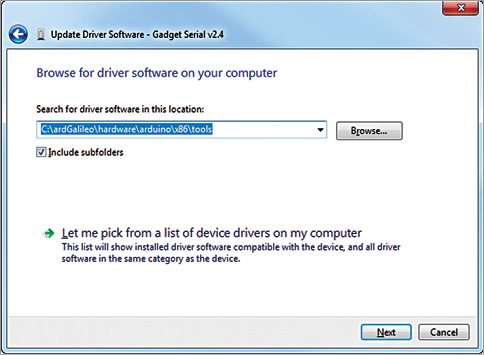
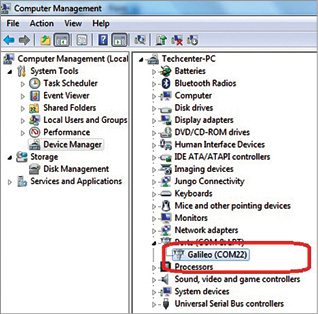
Reboot button. Use this button to reboot Galileo board (including Linux). The system will boot back in around 30 seconds.
Pin 13 LED. This is the LED that we will blink during blink test program.
Arduino sketch reset. This is the reset button that will restart Arduino sketch running in Galileo.
µSD card. It has a micro-SD card slot (compatible up to 32GB micro-SD card) and has an inbuilt dedicated SD controller.
PCIe connector. It has a Full PCI Express mini-card slot with PCIe 2.0 compliant features for Wi-Fi, Bluetooth or mobile connectivity; for Wi-Fi, Intel recommends Intel Centrino N135 mini PCIe wireless module as shown in Fig. 3.
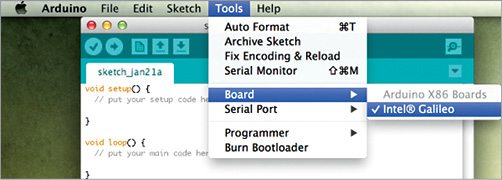
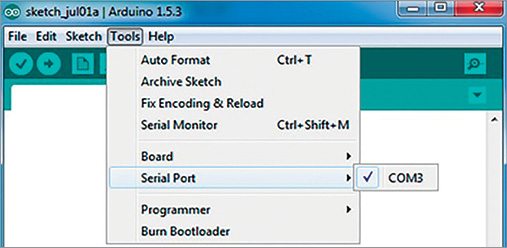
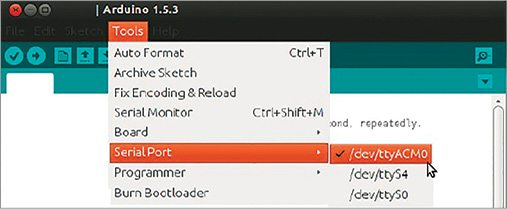
Powering up Intel Galileo
To switch on the board and upload the code, the following components will be required:
Power supply. You can use any supply but make sure that it can keep up to 3A, and output voltage must be regulated to 5V DC. Connect the supply to the 5V input connector.
USB to A/B micro cable. This is included with the board. It is used to connect Galileo board to the computer.
Software for Intel Galileo
Standard Arduino integrated development environment (IDE) does not support Intel Galileo.
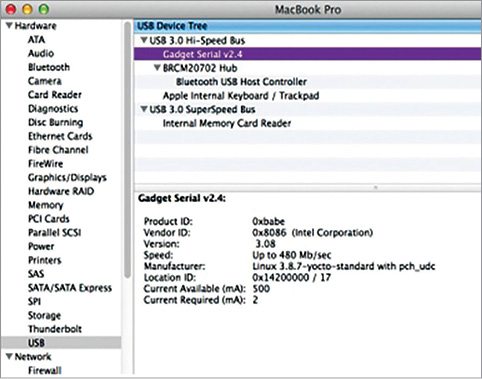
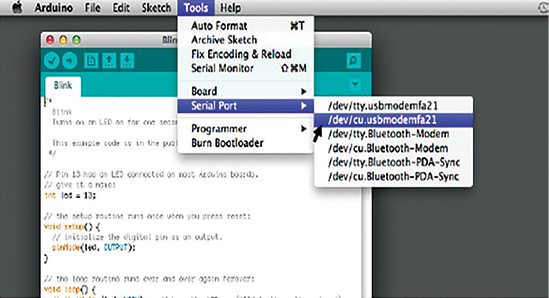
The supported IDE can be downloaded from communities.intel.com/docs/DOC-22226
Download the version that is compatible to your operating system (OS). The versions available are for Windows, Linux (32- and 64-bit versions) and Mac OSes.
Lab note. This project was tested on Windows 7 and Ubuntu 13.04.
Software installation for Windows
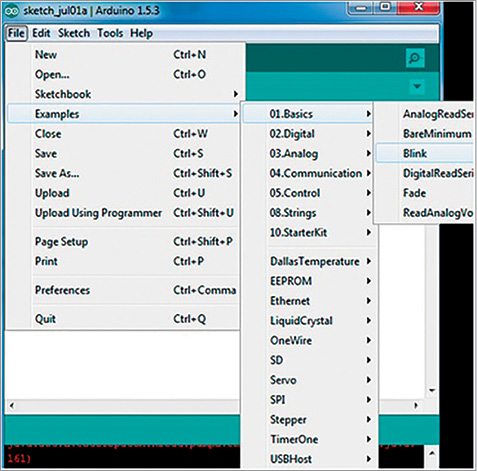

Save the unzipped file in C: drive. The unzipped file can be saved by the same name (Arduino-1.5.3) as shown in Fig. 4.
Open Arduino-1.5.3 folder and run arduino.exe to launch Intel Arduino IDE for Galileo.
After software/IDE installation, connect the board to the computer for which you also need to install required drivers.




